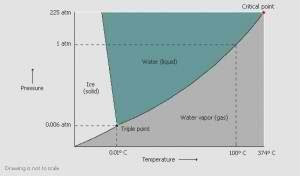What Is a Freeze Dryer?
A freeze dryer removes water from a perishable material in order to preserve it, extending its shelf life and/or making it more convenient for transport. Freeze dryers work by freezing the material, then reducing the pressure and adding heat to allow the frozen water in the material to change directly to a vapor (sublimate).
A freeze dryer works in three phases:
Freezing
Primary Drying (Sublimation)
Secondary Drying (Adsorption)
Proper freeze drying can reduce drying times by 30%.
Phase 1: Freezing Phase

This is the most critical phase. Freeze dryers use various methods to freeze a product.
Freezing can be done in a freezer, a chilled bath (shell freezer), or on a shelf in the freeze dryer.
The freeze dryer cools the material below its triple point to ensure that sublimation, rather than melting, will occur. This preserves the material’s physical form.
A freeze dryer most easily freeze dries large ice crystals, which can be produced by slow freezing or annealing. However, with biological materials, when crystals are too large they may break the cell walls, and that leads to less-than-ideal freeze drying results. To prevent this, the freezing is done rapidly.
For materials that tend to precipitate, annealing can be used. This process involves fast freezing, then raising the product temperature to allow the crystals to grow.
Phase 2: Primary Drying (Sublimation)
The second phase is primary drying (sublimation), in which the pressure is lowered and heat is added to the material in order for the water to sublimate.
The freeze dryer’s vacuum speeds sublimation. The freeze dryer’s cold condenser provides a surface for the water vapor to adhere and solidify. The condenser also protects the vacuum pump from the water vapor.
About 95% of the water in the material is removed in this phase.
Primary drying can be a slow process. Too much heat can alter the structure of the material.
Phase 3: Secondary Drying (Adsorption)
This final phase is secondary drying (adsorption), during which the ionically-bound water molecules are removed.
By raising the temperature higher than in the primary drying phase, the bonds are broken between the material and the water molecules.
Freeze dried materials retain a porous structure.
After the freeze dryer completes its process, the vacuum can be broken with an inert gas before the material is sealed.
Most materials can be dried to 1-5% residual moisture.
Freeze Dryer Problems to Avoid:
- Heating the product too high in temperature can cause melt-back or product collapse
- Condenser overload caused by too much vapor hitting the condenser.
- Too much vapor creation
- Too much surface area
- Too small a condenser area
- Insufficient refrigeration
- Vapor choking – the vapor is produced at a rate faster than it can get through the vapor port, the port between the product chamber and the condenser, creating an increase in chamber pressure.
Important Terms
Here are a few important terms related to freeze dryers. For a comprehensive list see our freeze drying terminology page.
- Eutectic Point or Eutectic Temperature: The point at which the product only exists in the solid phase, representing the minimum melting temperature. Not all products have a eutectic point or there may be multiple eutectic points.
- Critical Temperature: During freeze drying, the maximum temperature of the product before its quality degrades by melt-back or collapse.
- Crystalline: The material forms crystals when frozen; has a eutectic point or multiple eutectic points. Fast freezing creates small crystals which are hard to dry; annealing can help form bigger crystals.
- Amorphous: Multi-component mixtures which do not crystallize and do not have a eutectic point. They turn into a ‘glass." Freeze drying needs to be performed below the glass transition temperature.
- Collapse: The point at which the product softens to the extent that it can no longer support its own structure. This can be a problem for many reasons:
- Loss of physical structure
- Incomplete drying
- Decreased solubility
- Lots of ablation (splat)




